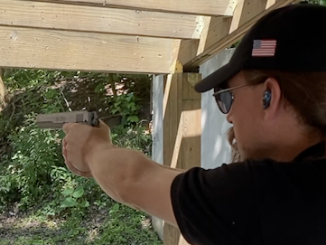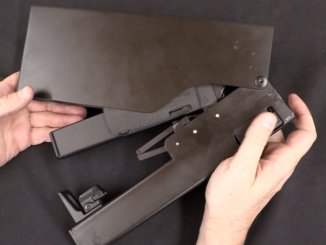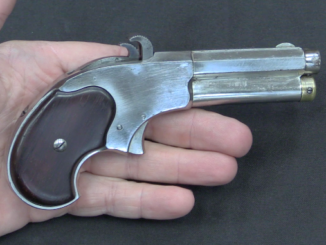Lot 3077 in the September 2019 RIA auction.
Rufus Nichols and Edward Childs had a partnership in Conway MA making revolving firearms in the late 1830s. Their patent was granted in 1838, for an indexing mechanism that linked the cylinder to the hammer. However, the guns also used a spring loaded cylinder with nested cones on the mouth of each chamber to prevent gas leakage. The cylinder had to be manually unlocked before it could be rotated, and then manually locked again before firing. Interestingly, some of their rifles (like this one) omitted the indexing mechanism entirely, leaving the shooter to line up the cylinder by hand. In total, the pair made 100-150 rifles in both .36 and .44 calibers, and about 2 dozen pistols.




Oh great, another example of “more fiddly than useful.”
I have been a muzzle loader for 50 years and the weight forward is typical. The problem with a revolving rifle is that it requires the shooter to support the weight with the off hand which puts it in the way if there is a chain fire. I would imagine that that is the reason for the conical configuration on the cylinder and barrel. If the spring is sufficient and the fitting of the cylinder/barrel is correct,I would think that it should eliminate the possibility of a chain fire. I still wouldn’t want to put my hand and arm out there. Thanks for the interesting video.
Well, I like that patchbox: a big area of intricately inletted brass to dress up an ordinary (and not very big) storage space. And a secretly-located button to open it! (Or was that method used elsewhere? Jim Kelly?) And I really fancy that gothic-style hammer, too! Balance? Heck, just lay ‘er acrost a log to aim, or take a rest offen a tree trunk, either way yer nether hand’s outer line wiv the fire! (I can’t help dropping into dialect when talking about cap’n ball. I’d be a real pain at Rendezvous.)
Not Jim, but yes, there are all sorts of snazzy button mechanisms for use with patch boxes. The simplest are simply a sliding wood lid. Other simple versions are just a brass door with a spring to hold it open or closed. The Model 1817 Common rifle, and unless I’m mistaken, the Model 1814 have a somewhat “hidden” button to open the patch-box door. These were iron, oval affairs surrounded on all sides by the butt-stock, rather than flush mounted with the butt plate.